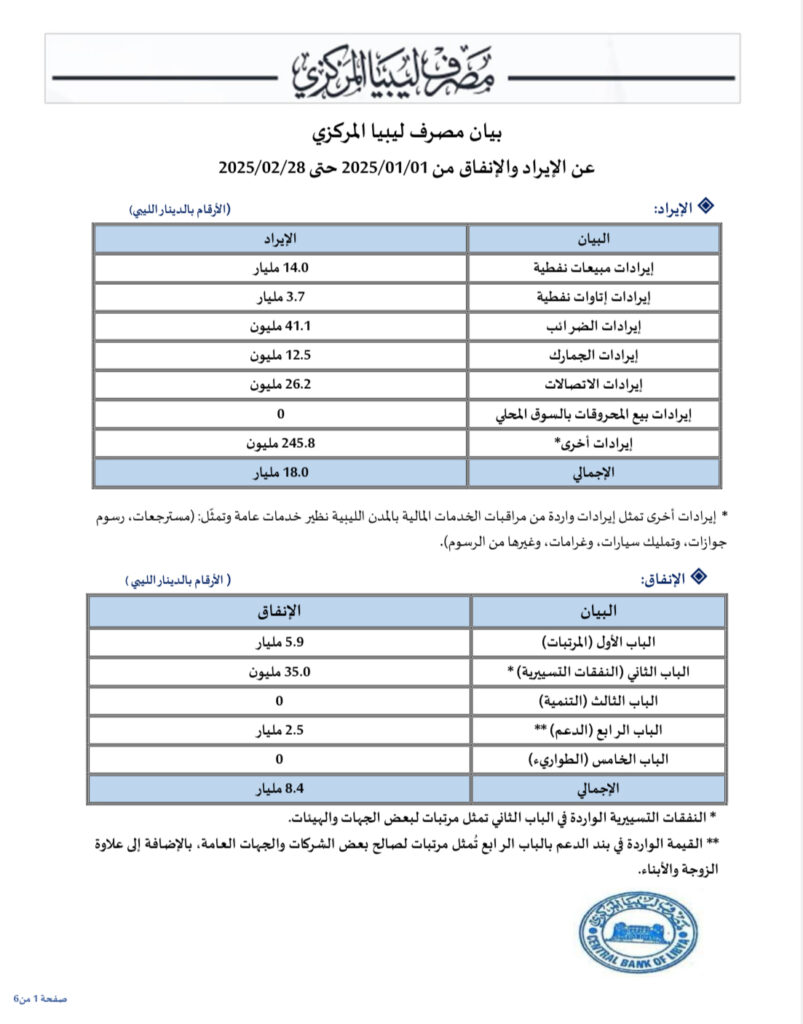Oil Price: Collapse in Libyan Oil Revenues Pushes Dinar Toward Freefall
The oil-focused website Oil Price reported on Tuesday that the Libyan dinar has dropped to its lowest level ever, driven by a sharp decline in oil revenues and escalating political unrest. The Central Bank of Libya devalued the currency by 13.3% on April 6, setting the official exchange rate at 5.5677 dinars per US dollar in its first move since 2020. However, the black market rate soared to over 7.20 dinars per dollar, reflecting deepening economic instability.
According to the website, the devaluation drew criticism from key government entities. The Presidential Council and the High Council of State believe the move exacerbates Libya’s financial crisis and weakens citizens’ purchasing power. They pointed to the absence of a unified national budget and the proliferation of parallel spending bodies as major contributors to the crisis. These criticisms could ignite further unrest as rivalry continues between the two dominant tribal factions vying for control over institutions in eastern and western Libya.
The website also noted that in the meantime, political factions in eastern Libya shut down major oil fields in protest over disputes within the central bank, further shrinking oil exports — the country’s main source of foreign currency.
The Central Bank reported that public debt has now reached 270 billion dinars, with projections suggesting it could surpass 330 billion dinars by year’s end unless urgent financial reforms are implemented.
The report concluded by stating that while international observers are calling for political reconciliation and robust economic reform, Libyan officials face mounting pressure to restore market confidence and stabilize an economy teetering on the brink of a deeper crisis.











